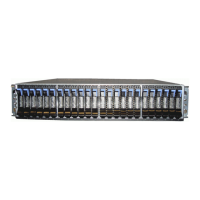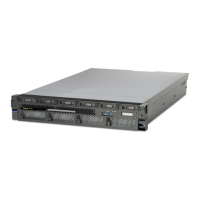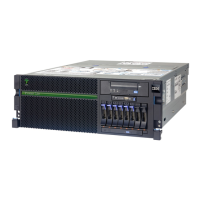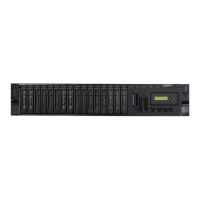Chapter 2. Architecture and technical overview 27
Draft Document for Review May 28, 2009 1:59 pm 4405ch02 Architecture and technical overview.fm
2.1.2 AltiVec and Single Instruction, Multiple Data
IBM Semiconductor’s advanced Single Instruction, Multiple Data (SIMD) technology based on
the AltiVec instruction set is designed to enable exceptional general-purpose processing
power for high-performance POWER processors. This leading-edge technology is engineered
to support high-bandwidth data processing and algorithmic-intensive computations, all in a
single-chip solution
With its computing power, AltiVec technology also enables high-performance POWER
processors to address markets and applications in which performance must be balanced with
power consumption, system cost and peripheral integration.
The AltiVec technology is a well known environment for software developers who want to add
efficiency and speed to their applications. A 128-bit vector execution unit was added to the
architecture. This engine operates concurrently with the existing integer and floating-point
units and enables highly parallel operations, up to 16 operations in a single clock cycle. By
leveraging AltiVec technology, developers can optimize applications to deliver acceleration in
performance-driven, high-bandwidth computing.
The AltiVec technology is not comparable to the IBM POWER6 processor implementation,
using the Simultaneous Multithreading functionality.
2.2 IBM EnergyScale technology
IBM EnergyScale™ technology is featured on the IBM POWER6 processor-based systems. It
provides functions to help the user understand and control IBM server power and cooling
usage.
In this section we will describe IBM EnergyScale features and hardware and software
requirements
Power Trending EnergyScale provides continuous power usage data collection. This
enables the administrators with the information to predict power
consumption across their infrastructure and to react to business and
processing needs. For example, an administrator could adjust server
consumption to reduce electrical costs. To collect power data for the
570 you need to power it through an Intelligent Power Distribution
Unit (iPDU). Other systems that support power trending collect the
information internally and do not require any additional hardware.
Power Saver Mode Power Saver Mode reduces the voltage and frequency by a fixed
percentage. This percentage is predetermined to be within a safe
operating limit and is not user configurable. Under current
implementation this is a 14% frequency drop. When CPU utilization is
low, Power Saver Mode has no impact on performance. Power Saver
Mode can reduce the processor usage up to a 30%. Power Saver
Mode is not supported during boot or re-boot although it is a
persistent condition that will be sustained after the boot when the
system starts executing instructions. Power Saver is only supported
with 4.2 GHz processors and faster.
Power Capping Power Capping enforces a user specified limit on power usage.
Power Capping is not a power saving mechanism. It enforces power
caps by actually throttling the processor(s) in the system, degrading
performance significantly. The idea of a power cap is to set
something that should never be reached but frees up
margined
